Timeline: Ukraine’s turbulent history since independence in 1991
Ukraine has suffered significant challenges in the decades since its independence from Moscow.
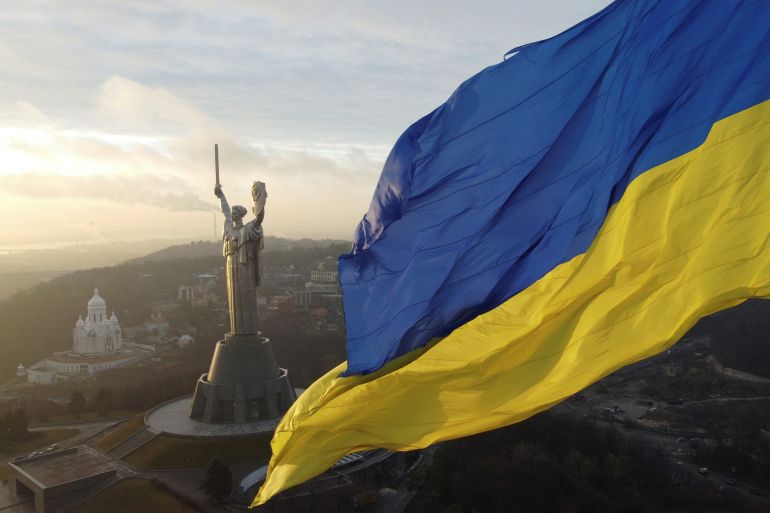
Russia has massed troops near Ukraine, and the West has threatened economic sanctions if it launches an invasion. Moscow denies planning an invasion but has demanded sweeping Western security guarantees in a tense standoff.
Here is a timeline of the main events in Ukraine’s political history since it won independence from Moscow in 1991.
Keep reading
list of 4 itemsIs there a weakness in NATO’s Eastern flank?
Ukraine-Russia crisis: Ceasefire violations rise at contact line
On Ukraine’s front line, Britons battle Russia-backed separatists
1991
Leonid Kravchuk, leader of the Ukrainian Socialist Soviet Republic, declares independence from Moscow. In a referendum and presidential election, Ukrainians approve independence and elect Kravchuk as president.
1994
Kravchuk loses a presidential election to Leonid Kuchma, also a former communist, in elections deemed largely free and fair by observers.
1999
Kuchma is re-elected in 1999 in a vote riddled with irregularities.
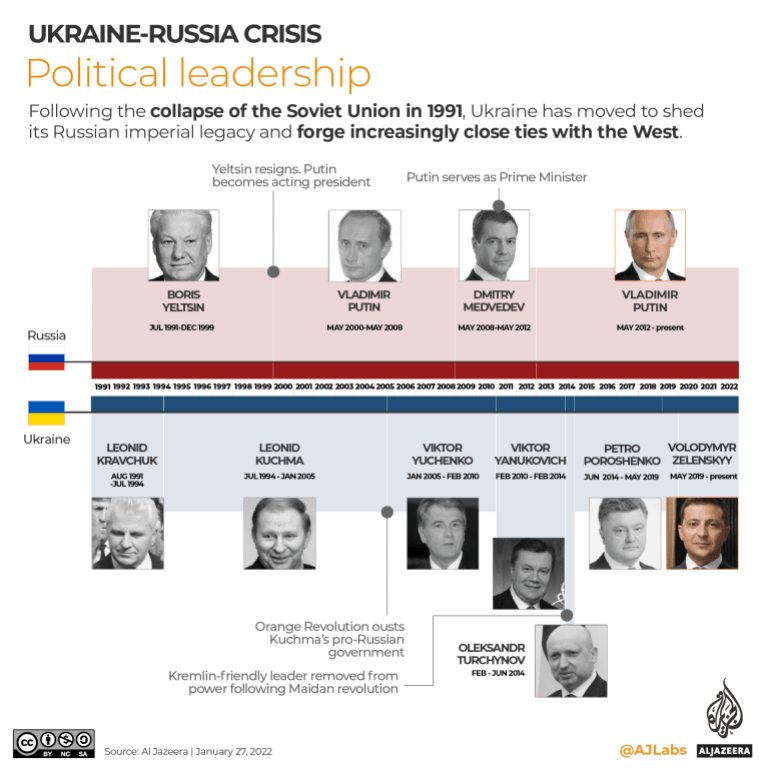
2004
Pro-Russian candidate Viktor Yanukovich is declared president but allegations of vote-rigging trigger protests in what becomes known as the Orange Revolution, forcing a rerun of the vote. A pro-Western former prime minister, Viktor Yushchenko, is elected president.
2005
Yushchenko takes power with promises to lead Ukraine out of the Kremlin’s orbit, towards NATO and the European Union. He appoints former energy company boss Yulia Tymoshenko as prime minister but, after infighting in Ukraine’s pro-Western camp, she is sacked.
2008
NATO promises Ukraine it will one day join the alliance.
2010
Yanukovich defeats Tymoshenko in a presidential election. Russia and Ukraine clinch a gas pricing deal in exchange for the extension of the lease for the Russian navy in a Ukrainian Black Sea port.
2013
Yanukovich’s government suspends trade and association talks with the EU in November and opts to revive economic ties with Moscow, triggering months of mass rallies in Kyiv.
2014
The protests, largely focused around Kyiv’s Maidan square, turn violent. Dozens of protesters are killed.
In February, parliament votes to remove Yanukovich, who flees. Within days, armed men seize the parliament of the Ukrainian region of Crimea and raise the Russian flag.
Moscow annexes the territory after a March 16 referendum which shows overwhelming support in Crimea for joining the Russian Federation.
In April, pro-Russian separatists in the eastern region of Donbas declare independence. Fighting breaks out and has continued sporadically, despite frequent ceasefires, into 2022.
In May, businessman Petro Poroshenko wins a presidential election with a pro-Western agenda.
In July, a missile brings down passenger plane MH17 en route from Amsterdam to Kuala Lumpur, killing all 298 people on board. The weapon used is traced back by investigators to Russia, which denies involvement.
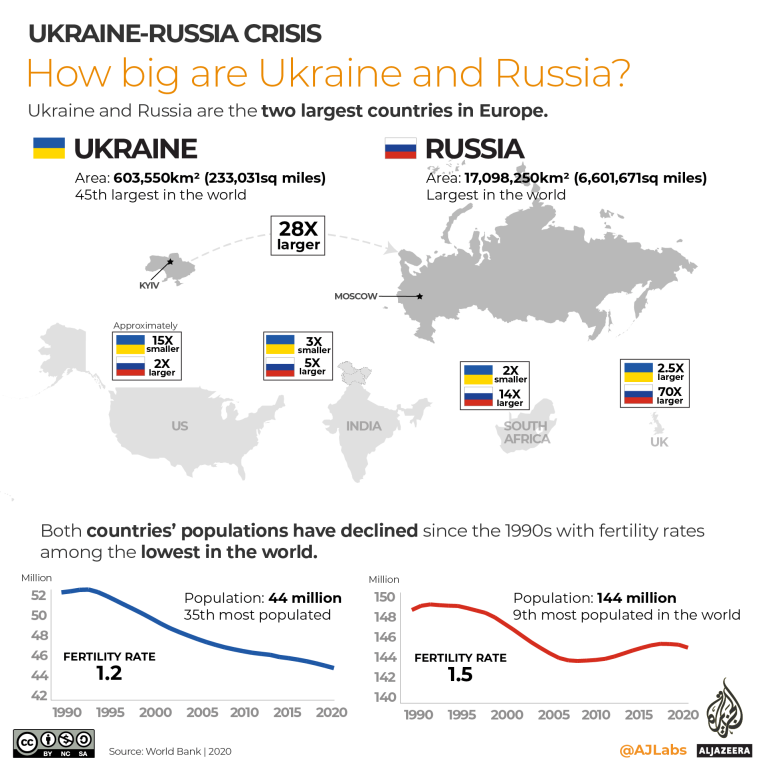
2017
An association agreement between Ukraine and the EU is passed, opening markets for free trade of goods and services, and visa-free travel to the EU for Ukrainians.
2019
A new Ukrainian Orthodox church wins formal recognition, angering the Kremlin.
Former actor and comedian Volodymyr Zelenskyy defeats Poroshenko in an April presidential election, promising to tackle corruption and end the simmering conflict in eastern Ukraine. His Servant of the People party wins a July parliamentary election.
Then-US President Donald Trump asks Zelenskyy in July to investigate Joe Biden, then his rival in the US presidential race, and Biden’s son Hunter Biden over possible business dealings in Ukraine. The call eventually leads to a failed attempt to impeach Trump.
March 2020
Ukraine goes into its first lockdown to curb COVID-19.
June 2020
The International Monetary Fund (IMF) approves a $5bn lifeline to help Ukraine stave off default during a pandemic-induced recession.
January 2021
Zelenskyy appeals to Biden, who is now US president, for Ukraine to join NATO.
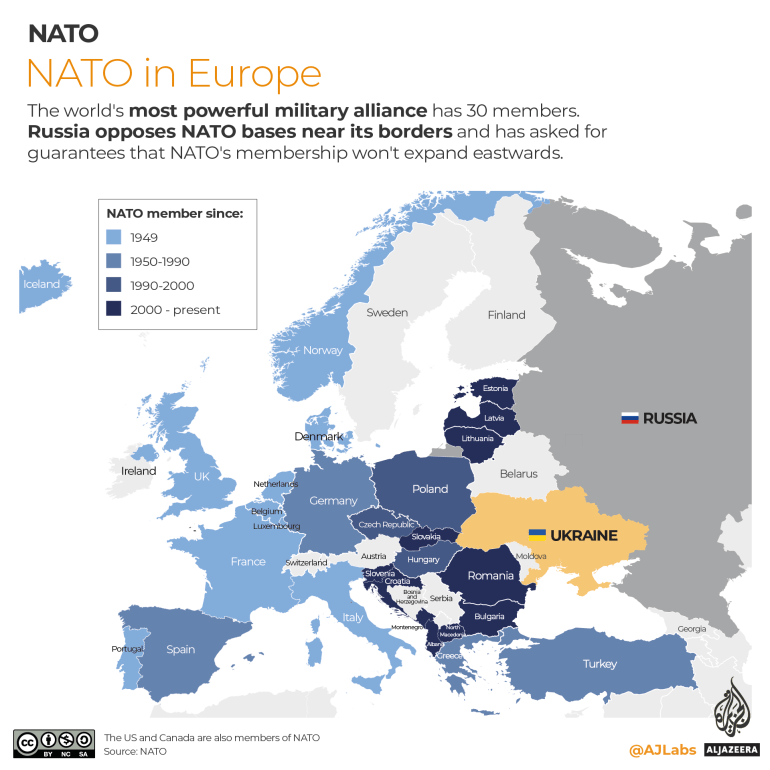
February 2021
Zelenskyy’s government imposes sanctions on Viktor Medvedchuk, an opposition leader and the Kremlin’s most prominent ally in Ukraine.
Spring 2021
Russia masses troops near Ukraine’s borders. They are partly dispersed after what Russia says was a training exercise.
October 2021
Ukraine uses a Turkish Bayraktar TB2 drone for the first time in eastern Ukraine, angering Russia.
Autumn 2021
Russia again begins massing troops near Ukraine.
December 7, 2021
Biden warns Russia of sweeping Western economic sanctions if it invades Ukraine.
December 17, 2021
Russia presents detailed security demands including a legally binding guarantee that NATO will give up any military activity in eastern Europe and Ukraine.
January 10, 2022
US and Russian diplomats fail to narrow differences on Ukraine, and subsequent talks also bring no major breakthrough.
January 14, 2022
A cyberattack warning Ukrainians to “be afraid and expect the worst” hits Ukrainian government websites.
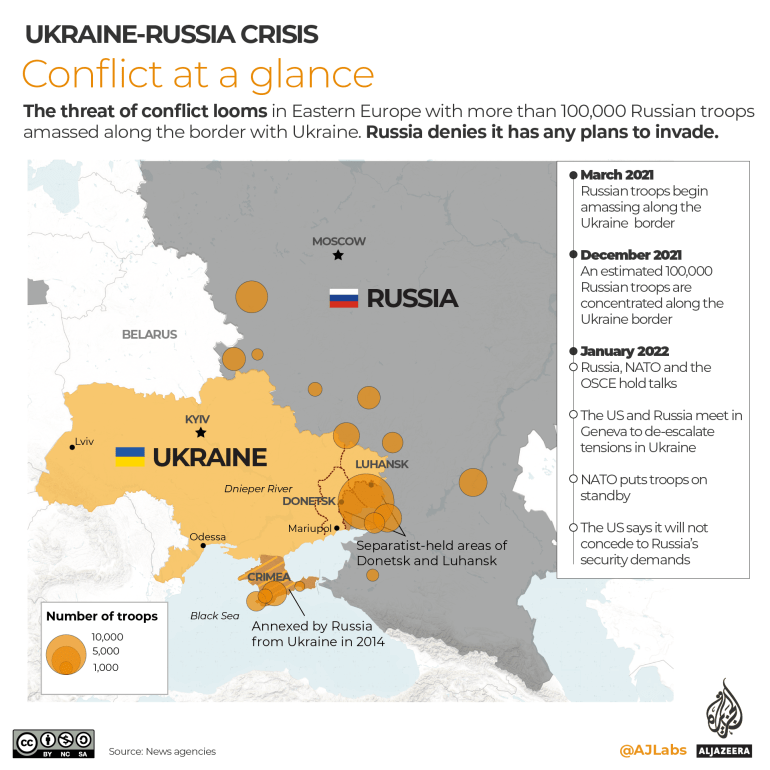
January 17, 2022
Poroshenko returns to Ukraine to face charges in a treason case. Russian forces start arriving in Belarus, to the north of Ukraine, for joint drills.
January 24, 2022
NATO puts forces on standby and reinforces eastern Europe with more ships and fighter jets. Some Western nations start evacuating non-essential embassy staff from Kyiv.
January 26, 2022
Washington presents a written response to Russia’s security demands, repeating a commitment to NATO’s “open-door” policy while offering a “principled and pragmatic evaluation” of Moscow’s concerns.
January 28, 2022
Putin says Russia’s main security demands have not been addressed but that Moscow is ready to keep talking.